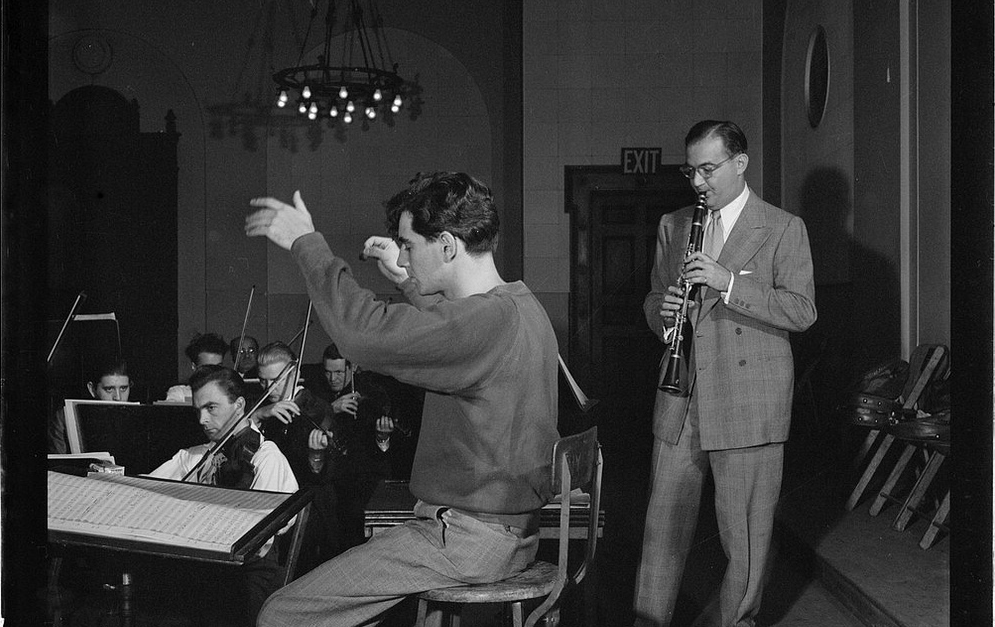Classic Benny Goodman: The King of Swing’s Classical Career
To many, Benny Goodman is a jazz musician. And why wouldn’t he be? Just a mention of his name conjures the image of Gene Krupa beating the heck out of his drums while the high-trousered clarinetist swings so sweetly.
But like many other excellent musicians, Benny Goodman’s career transcends one particular musical style. He may be forever remembered for his big band moment, but the King of Swing enjoyed a fruitful classical career as well.
While those swinging big bands enjoyed immense popularity in the 1930s, their influence began to decline in the years following World War II. This happened for a variety of reasons — transporting those bands and its equipment became more logistically difficult, and “jazz” as a musical idiom was entering into its frenetic bebop years.
Some musicians embraced jazz’s expanding frontiers, and still others began to fall in love with the nascent rock scene. While Goodman did dance with bebop for a while, he ultimately took steps to pursue a classical career.
Goodman’s interest in classical music was genuine, and the flurry of classical activity that defined his post-war years was far from his first exposure to that musical world — check out the Bach-like influences in his 1938 cover of “Bach Goes to Town,” by Alec Templeton.
But his first serious adventure in classical music may have come after a certain encounter with jazz impresario John Hammond. Though he was a supporter of jazz for decades, Hammond was also the violist in a chamber ensemble. After he invited Goodman to perform with him, the clarinetist’s interest really took off. Eventually, Goodman would take lessons with renowned clarinetist Reginald Kell, and even have the callouses on his fingers surgically removed in order to fully adapt to the requirements of classical performance.
Now, let’s check out some highlights from Goodman’s classical career.
Clarinet Quintet in A Major (Mozart)
When John Hammond invited Goodman over for a classical jam session, they played Mozart’s clarinet concerto. This recording of the concerto was cut in 1951, almost 15 years after the first Hammond-Goodman date. The result is what is surely a more mature classical sound for Benny.
Variations on a Theme from Mozart’s Don Giovanni (Beethoven)
Beethoven’s take on a Mozart duet is dreamy-yet-playful, and it turns out to be a perfect match for Goodman. Listen closely, and you can detect a swingingly syncopated presence among the notes. And, it features Nadia Reisenberg on Piano.
In case you needed any additional proof that he wasn’t messing around when it came to matters of the Clarinet, check out Goodman’s commissions. He surrounded himself with leading composers of the day, commissioning pieces and premiering new works.
Prelude, Fugue and Riffs (Bernstein)
This composition by Leonard Bernstein was actually a commission from Woody Herman, another bandleader and clarinetist. However, he never performed it — by the time Bernstein finished, Herman’s band had broken up. So, Benny Goodman stepped into the spotlight for the 1955 premiere, which aired on a CBS television special called What is Jazz.
Concerto for Clarinet and String Orchestra (Copland)
Copland wrote this piece on commission from Goodman, who premiered it in 1950 with the NBC Symphony Orchestra. Interestingly, Goodman chose not to communicate with Copland while the composer wrote. Instead, the clarinetist made some tweaks to the finished product — so it would be easier to play.
Ebony Concerto (Stravinsky)
Like Prelude, Fugue and Riffs, Stravinsky’s rhythmically infectious Ebony Concerto was written for Woody Herman and premiered in 1946. Above is a 1965 recording featuring the composer conducting the Columbia Jazz Band, with Goodman on clarinet.
Derivations for Clarinet and Band (Morton Gould)
One aspect of Gould’s composition that really sticks out are the labels for each of its individual movements: “Warm Up,” “Contrapuntal Blues,” “Rag” and “Ride Out.” Gould wasn’t just interested in the musical language of jazz, but the literal one too. The 1955 piece was written for Goodman, and also had a turn as a ballet with the New York Ballet.
Contrasts (Bartok)
This piece was actually a bit outside of the Hungarian composer’s comfort zone. Up until this point, Bartok did not use wind instruments in his chamber works. So as he worked on Goodman’s commission in 1938, the composer decided to shine a light on the differences between the instruments, rather than focus on achieving a perfect blend. Hence the name, Contrasts.
